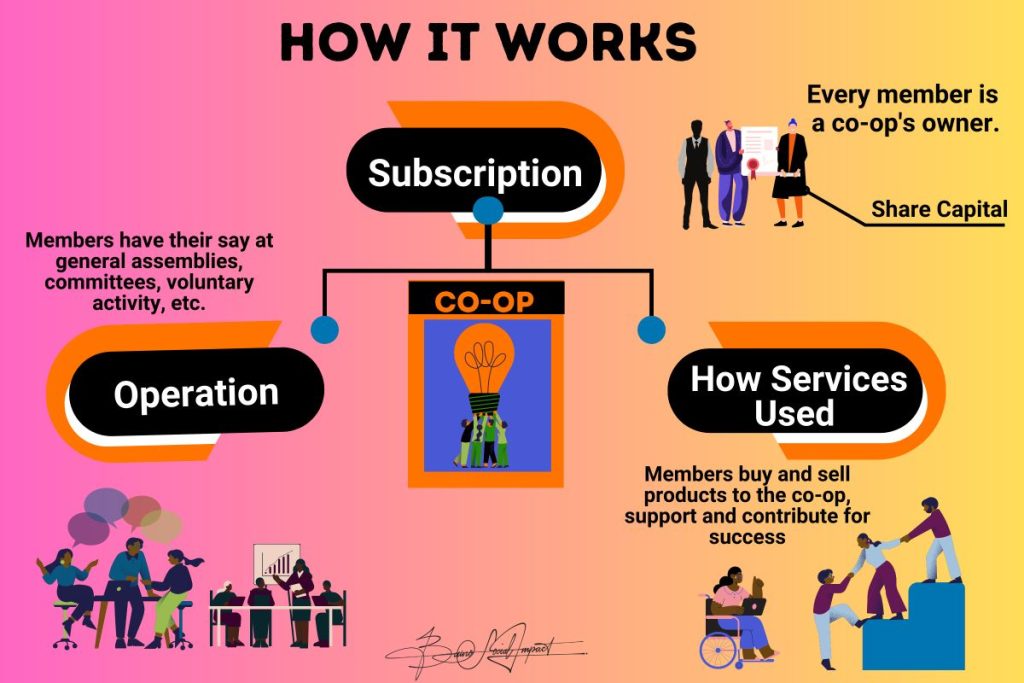Financial cooperatives play a crucial role: they act as a haven for deposits and are major sources of credit for households and small-to-medium-sized firms.

In the efforts to kick poverty out of the Busoga region, we are encouraged to open up and join financial cooperatives (co-op).
Financial cooperatives are banks or other financial institutions wholly owned and operated by individuals who hold membership in those institutions. The cooperative members, while being owners, are also customers driven by the intent to offer transparency in lending and investment practices for all members. (e.g., a credit union).
This type of cooperative venture is commonly established among members who share some common bonds, such as being involved in a particular industry. The typical financial cooperative will offer a full range of banking services, including checking and savings accounts, as well as loans that carry a rate of interest highly competitive with other institutions.
Unlike banks, co-ops tend to offer quality service along with competitive rates because they are more focused on the financial wellness of their members instead of maximising profits.
The goal of a financial cooperative is to act on behalf of a unified group to offer traditional banking services. These institutions attempt to differentiate themselves by providing above-average services and competitive rates in insurance, lending and investment dealings.
The size of financial cooperatives can vary from only a handful of branches to being widespread, with thousands of locations operating across specified locations, like districts. Many financial cooperatives offer products and services that are comparable to those offered by the major diversified banks.

The size of the cooperative is based on the number of members who participate. As more members join, the financial cooperative has more resources to offer financial products, reduced fees, lower interest rates on loans, and higher yields on savings.
A financial cooperative may form a board of directors to provide leadership and structure to the organisation.
With a financial cooperative, members can pool resources and create institutions that can offer customers financial services based on shared interests or professions.
One of the more common examples is the agricultural cooperative, where individuals and companies involved with farming and food production come together. The history of financial cooperatives stretches back to rural cooperatives that were formed to offer credit and financial services to farmers.
A cooperative of this type will likely include basic banking services, mortgages, educational services, business loans, retirement planning, and other training opportunities, as well as general networking capabilities through annual and semi-annual gatherings open to all members.

Consumer cooperatives may also be established to make various products and services available to members, such as healthcare, housing, grocery, and insurance. Housing cooperatives, for instance, can be made up of apartment complexes where members reside and in which they buy an ownership stake.
Another benefit of the financial cooperative is that some central support organisation actively seeks discounted benefits for all members. It is granted authority to negotiate and enter into contracts with various vendors based on the combined buying power of the cooperative members.
This often allows the organisation to command highly competitive discounted rates that each member can utilise if desired. By securing these rates through the financial cooperative, even members who would only use particular goods or services on a sporadic basis can enjoy the benefits of discounted pricing that would generally be available only to consumers who generate much larger volumes of business.

A financial cooperative does more than provide financial or economic benefits to its members.
The networking possibilities also help to create an atmosphere of mutual support that allows members to share information with relative freedom. This exchange of information is sometimes funnelled through the central support organisation. Further still, it can also occur at annual and semi-annual conferences, where members gather to confer on matters of interest to the cooperative.
Along with these nationwide gatherings, most cooperatives offer regional gatherings that allow members within a particular area to confer on matters of local interest. In addition, it is not unusual for various members to develop a strong rapport and exchange ideas and resources with one another when and as they see a need to do so.
